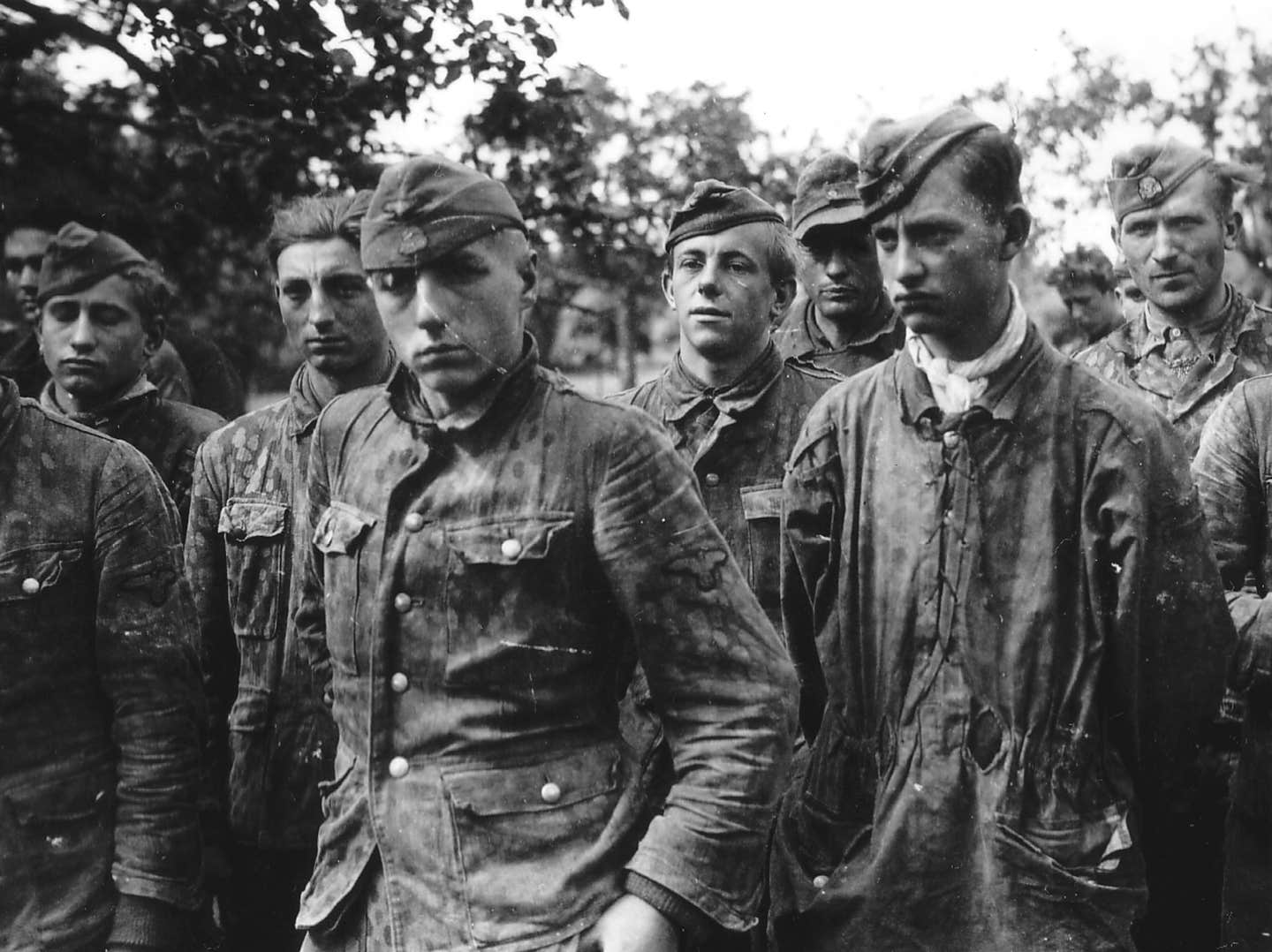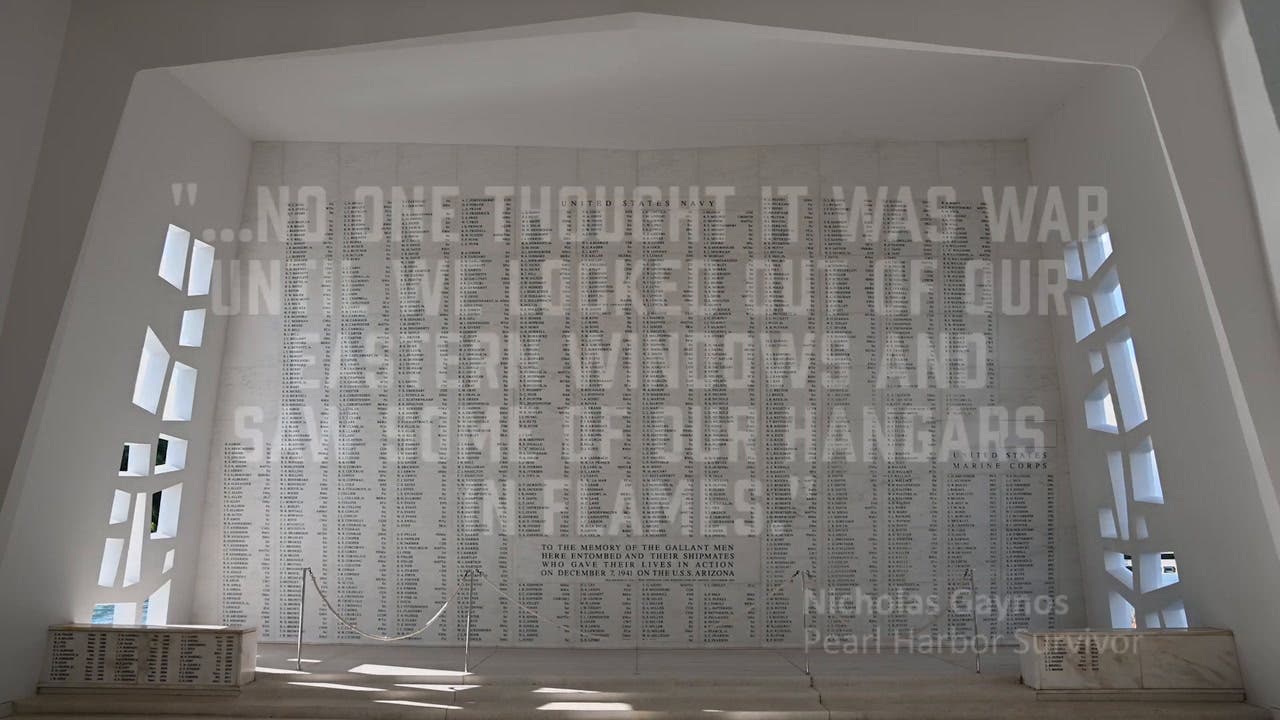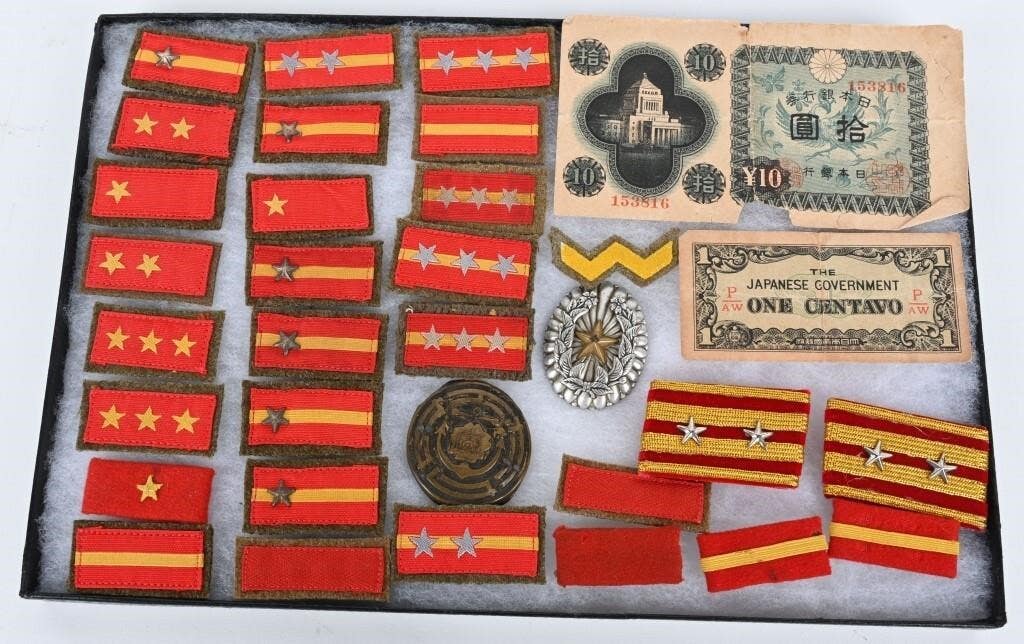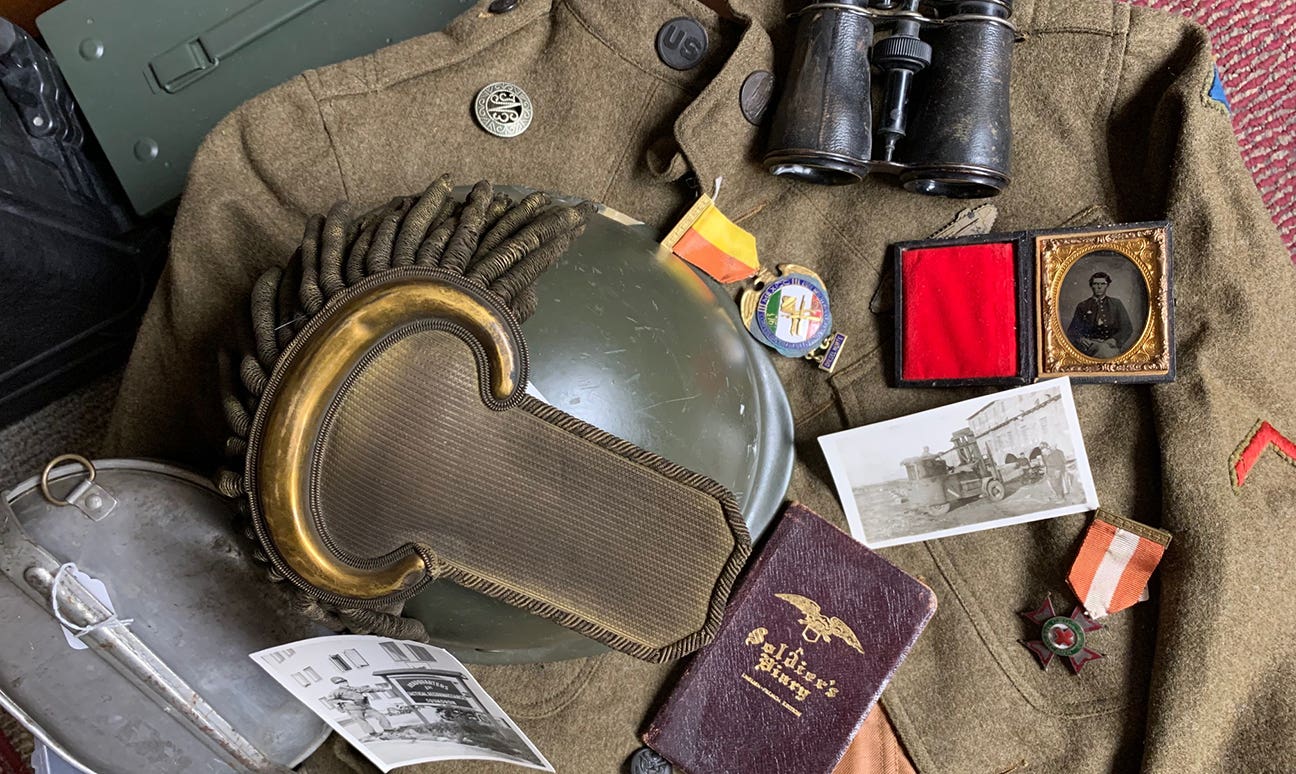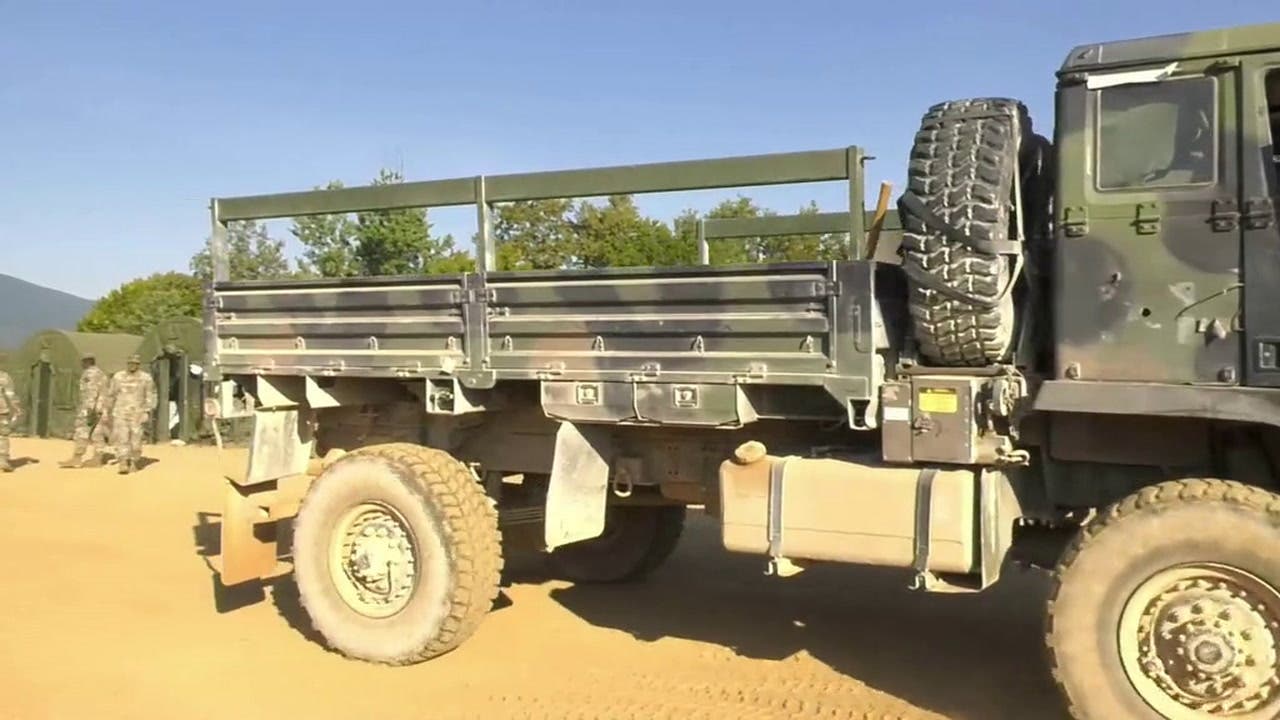Military Vehicles Magazine is 25 years old!
In the late 1970s, the historic military hobby experienced pretty intense growing pains. The nation’s oldest organization dedicated to the collecting and driving of historic military vehicles (HMVs), the National…
In the late 1970s, the historic military hobby experienced pretty intense growing pains. The nation’s oldest organization dedicated to the collecting and driving of historic military vehicles (HMVs), the National Military Vehicles Collectors Association (NMVCA), splintered in 1976, resulting in a new organization, the Military Vehicle Collectors Club (MVCC). The following year, the NMVCA’s first chapter established east of the Mississippi, the North Jersey Chapter, switched allegiance to the new MVCC. Inspired by the successful growth of the North Jersey Chapter, Dennis Spence started the South Jersey Chapter. The MVCC—and the hobby—was flourishing on both coasts by 1980.
The new decade, however, saw even more change. In the mid-1980s, the MVCC changed its name to “International Military Vehicles Collectors Club” (IMVCC) in order to attract members from the internationally growing enthusiasm for collecting and restoring military vehicles. By 1986, the changes were, perhaps too much stress on the young organization, and the powerful North Jersey Chapter gradually reformed as a new organization, the Military Transport Association of North Jersey (MTA). At the time, the MTA did not affiliate itself with any other organization. Dennis Spence, the owner of Portrayal Press, began to publish Military Vehicles Magazine in 1987 and the members of the MTA, as well as many of the IMVCC, embraced the magazine as the premier publication dedicated to people who collected, restored and drove historic military vehicles.
The very first issue of Military Vehicles Magazinewas 24 pages long and was full of advertisements, articles, photos and the most important “Events Calendar.” Many of the advertisers are still prominent 25 years later and include: Portrayal Press, Army Jeep Parts Inc., the East Coast Spring Rally, Surplus City Jeep Parts, Nelson Surplus Jeeps and Parts and Rapco Reproductions. The back page listed advertising rates, deadlines and a staff of three: P.T. Brinkerhoff, R.G. Ivory and T.E. Richards. If anyone doubted the potential success of the new magazine, they were sorely mistaken. Over the following nine years, subscriber numbers grew to more than 11,000, dwarfing the IMVCC that had been reformed as the Military Vehicle Preservation Association (MVPA) in 1990.
Publisher and founder Dennis Spence decided to sell the magazine in 1996. David and Elizabeth Ahl purchased the magazine and subscribers continued to climb aboard the “olive drab meteor.” When the Ahls sold the magazine to military vehicle collector and publishing giant Chet Krause in 2001, subscribers numbered more than 16,000.
A Quarter Century Later
With this significant birthday, many ask if the magazine has peaked. The fact is, it may have…for the time being. At the end of the 24thyear, subscribers to Military Vehicles Magazine numbered around 15,000—about 1,000 below its highest mark. Why?
A number of factors are contributing: First, and foremost, the WWII generation is passing. Not only did this incredible group of men and women keep the world free of German, Italian and Japanese tyranny during WWII, they formed the absolute core of military vehicle enthusiasts in the decades after the war. Not only does their passing leave holes in our hearts, it marks a significant decline in our hobby. Fortunately, the sons and daughters of the WWII generation are experiencing an overwhelming sense of nostalgia for the era of youth of their parents, aunts and uncles. The “Kids of the Greatest Generation” are a group strongly invested in the historic military vehicle hobby.
Veterans of subsequent conflicts such as the Korean, Vietnam and Gulf Wars have kindled a significant spurt in the military vehicle hobby, but face it, the number of men and women who served during WWII (about 16 million) is about 6 million more than those who served during the Korean, Vietnam and first Gulf Wars combined! Just from the numbers, the WWII Generation was bound to create a larger pool of military vehicle enthusiasts.
It would be wrong, however, to assume the hobby is on the decline as the WWII generation passes on. Quite the opposite is true. As of the 2010 U.S. Census, there were 21.8 million living veterans. Of that number, only 2.1 million were veterans of WWII and 2.6 million veterans of the Korean War.Nearly 35 percent of all living veterans (about 7.6 million) served during the Vietnam War era (1964-1975). Another 5.5 million served the Cold War and 4.8 million were veterans of either or both of the Gulf Wars.
What do all these numbers mean for the health of the hobby? Well, during the past 25 years, WWII and Korean War veterans formed the core of our hobby. Today, though, those men and women constitute only about 20 percent of our living veterans— 4.7 million.
On the other hand, living Vietnam veterans number nearly 7.6 million. These men and women are mostly in their 60s or early 70s. Their families are raised, and they are either retired or nearing retirement. These are two prime factors that influence the purchase of a historic military vehicle.
Coming up right after these Vietnam veterans are the Cold War warriors, an army of about 4.8 million! With those two groups hitting a chronological and financial maturity, our hobby stands to really develop in the following 10-15 years.
The next question is, however, “Will there be vehicles for new enthusiasts?” That’s a good question, what with dwindling sales of surplus vehicles. While there will always be a nostalgic demand for WWII vehicles, there will be growing interest in M-series vehicles of the Vietnam and Cold War years. M151s, M37s, M715s, M35s and even CUCVs will become more fiercely sought and purchased while the prices of mediocre restored WWII vehicles will drop (great restorations of great vehicles will always command premium prices).
The hurdle the hobby must consider in the next 10-15 years, though, will be, “What vehicles will the veterans and enthusiasts of the Gulf War be able to buy?” The iconic vehicle of both Gulf Wars and the War on Terror is, indisputably, the HMMWV. The problem is, very few of these were released into the public stream of commerce. After an initial trickle of vehicles, the Department of Defense decided it was better to destroy used-up HMMWVs rather than release them to the public. Demand for the vehicles will probably lead to importing foreign-used vehicles rather than attempting to locate the few American-used vehicles now in private hands. The demand will be high, and the supply very, very low. The smart investor will begin to look at the possibility of locating foreign-used HMMWVs and begin work on importing them now—it will probably takes years of navigating red-tape before any are successfully allowed into the U.S.
Though the supply of M-series vehicles will be dwindling over the next 25 years, the supply of WWII and Korean War vehicles will begin to increase as the first generation of collectors release their vehicles back into the market place. Will demand keep the price high or will this influx of vehicles into the market actually cause a dip in values?
Is there a “decline” in the HMV hobby?
So here we are, 25 years later. Very few who are participate in the heart of the hobby talk about any decline. Rather, they speak of no better time for buying great vehicles as the first generation of hobbyists retire, and for new people to enter the hobby inexpensively because the weak economy is forcing down the prices of medium quality vehicles. But what about the publishing side of our hobby?
Military Vehicles Magazine, now owned by F+W Media, has a dedicated staff and publisher who recognize that it is more than a magazine. MVM represents the entire historic military vehicle community and to that end, has established multiple paths for serving those interested in restoring, preserving and driving historic military vehicles. Today, you can receive breaking hobby news via our Facebook page or our electronic newsletter (“Militar-E-News”), receive important vendor and hobby announcements via our concerted “e-blasts” and receive special package deals with our partner magazine, Military Traderthrough our “total military collecting hobby” website, www.militarytrader.com.
Though our magazine’s subscriber number of 15,000 might appear to be a drop in the number of people who are interested in historic military vehicles, the truth of the matter is, we serve nearly 40,000 individuals who participate in our various outlets. MVM is alive, strong and proud! We are honored to have served the historic military community for 25 years and are committed to continuing delivering engaging, important information for another quarter of a century to those who preserve, collect and drive historic military vehicles.
Keep ’em rolling,
John Adams-Graf
John Adams-Graf ("JAG" to most) is the editor of Military Trader and Military Vehicles Magazine. He has been a military collector for his entire life. The son of a WWII veteran, his writings carry many lessons from the Greatest Generation. JAG has authored several books, including multiple editions of Warman's WWII Collectibles, Civil War Collectibles, and the Standard Catalog of Civil War Firearms. He is a passionate shooter, wood-splitter, kayaker, and WWI AEF Tank Corps collector.



